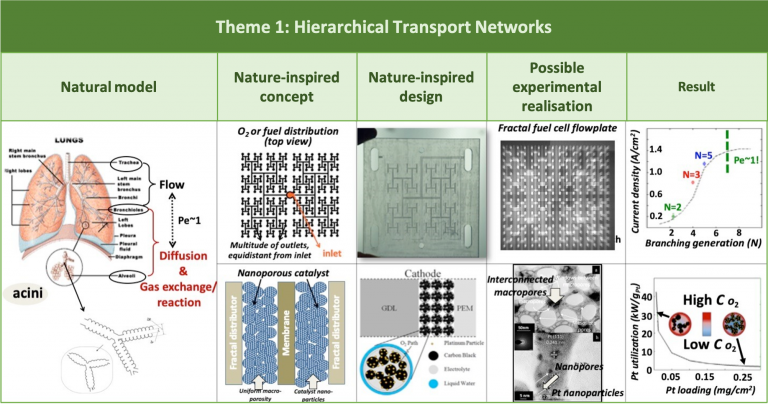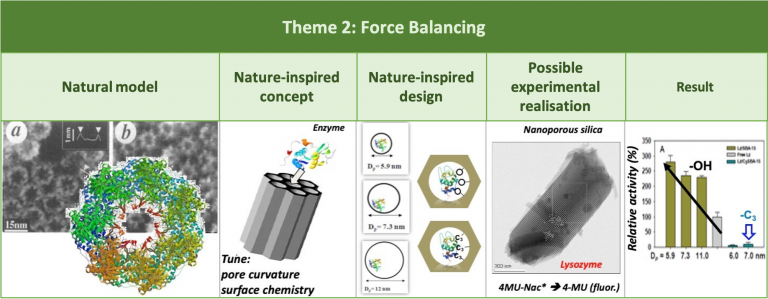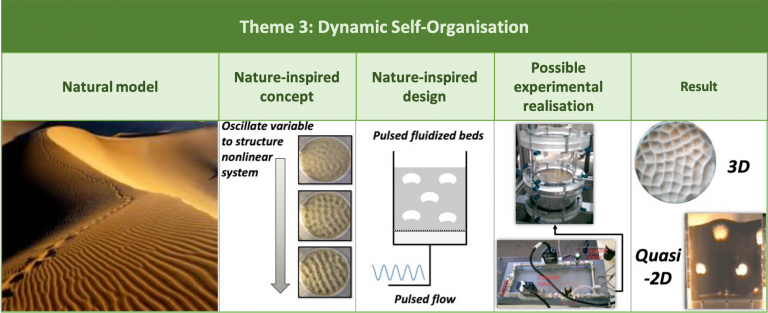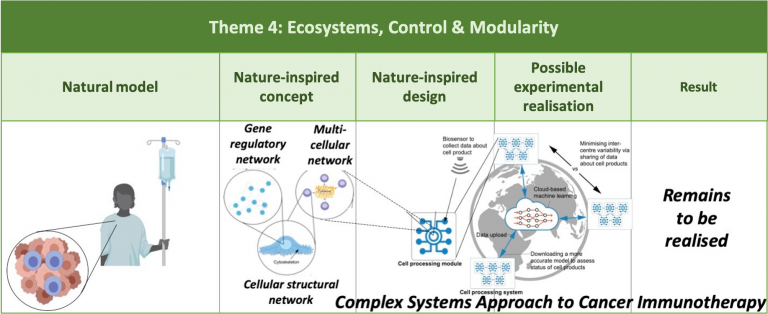Research in the Centre for Nature Inspired Engineering focuses around four themes:
- Hierarchical Transport Networks
- Force Balancing
- Dynamic Self-Organisation
- Ecosystems, Control & Modularity
These are linked by application areas. This matrix approach is expandable and enables us to transpose ideas into workable (engineering) solutions within different contexts relevant to applications.
Hierarchical Transport Networks

This Theme draws inspiration from the way nature bridges microscopic to macroscopic length scales in order to preserve the intricate microscopic or cellular function throughout (as in trees, the circulatory system, and lungs). The aim of projects under this theme is to employ the nature-inspired engineering approach to realise optimal, hierarchical transport networks for applications related to energy, water, health, sustainable chemical production, and scalable manufacturing.
Projects:
Force Balancing

Architects and structural engineers have drawn lessons from mechanical force balancing in nature for centuries. The work of Paxton, Eiffel and Gaudí immediately come to mind, but other areas of engineering have not explored this to the fullest or in the broadest sense, as, in particular, opportunities at the nanoscale are tremendous.
This Theme draws inspiration from the balanced use of fundamental physical forces (e.g., electrostatic, polarization forces) and geometrical confinement, as in protein channels in cell membranes and enzyme folding aided by chaperones.
We aim to unravel the principal cooperative interactions that lead to high efficiency of biological membranes, bio-catalysts and other natural systems, and employ them to design superior solutions for water desalination, sustainable chemical production, environmental and biomedical applications.
Projects:
Dynamic Self-Organisation

Here we explore the dimension of time. This Theme draws inspiration from the way fluctuations in nature induce structure (as in natural pattern formation and selection), and the emergence of structures through collective phenomena (as in bacterial communities).
From bacteria to humans, living organisms self-organise into communities that are much more resilient, adaptive and robust than each individual separately. These communities are examples of complex systems, with properties that are not trivially inferred from the individual elements.
We aim to understand the fundamental principles that govern the formation of biological communities, to guide the design of architectural spaces, self-healing and adaptive materials. We also aim to understand the role of fluctuations in structuring natural systems, and how this role could be implemented in the design of materials and processes with desirable dynamics.
Projects:
Ecosystems, Control & Modularity

Ecosystems, Control & Modularity implements network properties and control mechanisms that underpin resilience and adaptability in ecosystems and other natural networks, in applications ranging from catalysis to process intensification, medicine, and the built environment.
A new Flagship Project will explore the translation of core mechanisms to process intensification and manufacturing, while a further series of Inspiration Grants will expand the interface between chemical process systems engineering, computer science, genetics and biochemical engineering to build a strong, validated foundation for applications in other areas.
 Close
Close

